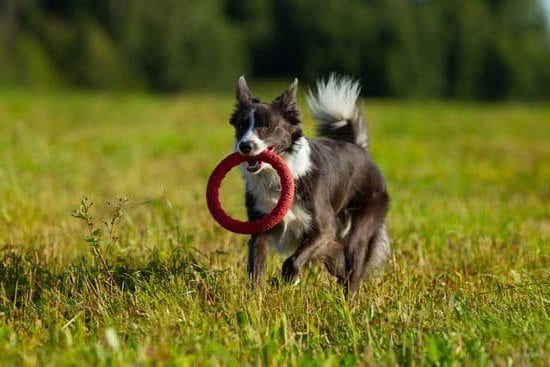Puppy pad training is an essential skill for both new and experienced dog owners. Whether you live in a high-rise apartment or have limited access to outdoor spaces, teaching your dog to use puppy pads can be a convenient and practical solution. This article will guide you through the process of puppy pad training, offering tips and techniques to make the process as smooth as possible.
Properly trained dogs not only provide a cleaner living environment but also experience less stress and anxiety when it comes to elimination. Puppy pad training offers a reliable method for ensuring that your furry friend understands where it is appropriate to relieve themselves indoors. By establishing a designated potty area, you can avoid accidents on carpets, furniture, and other household objects.
Understanding the fundamentals of puppy pad training is crucial before embarking on this journey. Learning about your dog’s natural instincts and behaviors will enable you to tailor your training methods accordingly. This article will provide you with a brief overview of how puppy pad training works, ensuring that you are equipped with the necessary knowledge to train your dog effectively.
Preparing for puppy pad training involves gathering the right supplies. Having these items on hand before beginning your training journey will make the process more efficient and organized. From choosing the perfect pads to deciding on cleaning products that are safe for both pets and surfaces, careful preparation is key.
By following these steps and being patient with your furry companion, puppy pad training can be incredibly successful. With consistency and positive reinforcement techniques, you can teach your dog where their designated elimination area is indoors. This introductory section has laid out the importance of puppy pad training, provided an overview of what to expect throughout the article’s sections, and highlighted the significance of proper preparation. Now, let’s dive into understanding puppy pad training in more detail.
Understanding Puppy Pad Training
Puppy pad training is a popular method used to teach dogs to eliminate in a designated area indoors. This section will provide a brief overview of puppy pad training and its benefits.
Puppy pad training involves teaching your dog to use a specific area, usually a puppy pad or absorbent pad, as their bathroom spot. This method is especially useful for dog owners who live in apartments or houses without access to a yard, or for pet owners who are unable to take their dogs outside frequently enough.
The first step in puppy pad training is to introduce your dog to the concept of using the pads for elimination. Begin by placing the puppy pads in an area that is easily accessible for your pup, and show them where the pads are located. It’s important to choose an area that is quiet and away from high foot traffic areas, as this can help reduce accidents.
To encourage your dog to use the pads, you can use positive reinforcement techniques such as treats or praise whenever they successfully eliminate on the pad. It’s essential to be patient during this training process and avoid punishing your dog for accidents. Instead, focus on praising and rewarding them when they do use the pads correctly.
Using consistency and repetition is key when it comes to puppy pad training. Establishing a routine for your dog’s bathroom breaks will help them understand when and where they should go potty. Designate specific times throughout the day for potty breaks, and bring your dog to the designated area each time.
In summary, understanding puppy pad training involves introducing your dog to a specific area where they can eliminate indoors using absorbent pads. By using positive reinforcement and establishing a consistent routine, you can effectively teach your dog this bathroom habit. In the next section, we will discuss how to prepare for puppy pad training by gathering the necessary supplies.
Preparing for Puppy Pad Training
Puppy pad training requires a few essential supplies to ensure success and make the process easier for both you and your furry friend. Here is a list of items you will need to gather before starting the training:
- Puppy Pads: The cornerstone of puppy pad training is, of course, the puppy pads themselves. These absorbent pads are designed to mimic grass and provide a designated spot for your dog to eliminate indoors. Look for high-quality pads that are leak-proof and have multiple layers to prevent any messes from seeping through.
- Pee Pad Holder: While not absolutely necessary, a pee pad holder can be a valuable addition to your setup. It helps keep the puppy pad securely in place, preventing it from sliding around or being torn apart by an enthusiastic pup. Some holders even have raised edges to catch any liquids that might overflow.
- Cleaning Supplies: Accidents are inevitable during puppy pad training, so it’s essential to have cleaning supplies readily available for quick and effective clean-up. Enzyme-based cleaners specifically formulated for pet messes can help eliminate odors and discourage repeat accidents.
- Treats and Rewards: Positive reinforcement plays a crucial role in puppy pad training, so stock up on your dog’s favorite treats or rewards. Use these as incentives when your dog successfully eliminates on the puppy pad, praising them with affectionate words and pets as well.
In addition to these supplies, consider having some extra items like poop bags or litter scoop (if using disposable litter) nearby for easy disposal when accidents occur off the pad area.
By gathering these supplies ahead of time, you’ll be well-prepared to embark on the journey of puppy pad training with confidence and set yourself up for success right from the start.
Choosing the Right Location
When it comes to puppy pad training, choosing the right location for your puppy pad area is crucial. This will not only help in creating a consistent elimination spot for your dog but also make the training process easier and more effective. Here are some important factors to consider when setting up the ideal puppy pad area:
- Accessibility: Choose a location that is easily accessible for your puppy. It should be on the same floor as your main living area, preferably in an area where your dog spends most of its time. This will ensure that your puppy can quickly and easily reach the designated spot whenever it needs to eliminate.
- Privacy: Dogs prefer privacy when they eliminate, so choose an area that provides a certain level of seclusion. You can place the puppy pads in a corner or against a wall to create a private space for your dog. Avoid placing them in high-traffic areas, such as hallways or near doorways.
- Easy Clean-up: Accidents are bound to happen during puppy pad training, so it’s important to choose a location that is easy to clean up after accidents occur. Avoid carpeted areas, as they can be difficult to clean and may retain odors. Instead, consider using hard flooring surfaces such as tile or vinyl in the designated area.
In addition to these factors, it’s worth noting that consistency plays a key role in puppy pad training success. Once you have chosen the right location for the pad area, avoid moving it around too often. Consistency will help reinforce the association between the designated spot and elimination for your dog.
| Factor | Consideration |
|---|---|
| Accessibility | The puppy pad area should be easily accessible for your dog. |
| Privacy | Create a private space for your dog by placing the pads in a corner or against a wall. |
| Easy Clean-up | Avoid carpeted areas and opt for easy-to-clean hard flooring surfaces like tile or vinyl. |
By considering these factors and following the guidelines provided, you can ensure that you set up an ideal puppy pad area that will contribute to successful training outcomes. Remember to provide positive reinforcement to your dog when they use the designated spot, which will further encourage them to develop good habits.
Teaching Your Dog to Associate the Puppy Pad with Elimination
When it comes to puppy pad training, one of the most important steps is teaching your dog to associate the puppy pad with elimination. This helps them understand that the designated area for elimination is the puppy pad and not anywhere else in the house. Positive reinforcement techniques can greatly aid in this process, making it easier for your dog to learn and reinforce good habits.
Use rewards
Positive reinforcement involves rewarding your dog for exhibiting the desired behavior. Every time your dog successfully eliminates on the puppy pad, praise them lavishly and give them a treat or a favorite toy as a reward. This positive association will motivate them to continue using the puppy pad and reinforce their understanding of where they should eliminate.
Be consistent
Consistency is key when using positive reinforcement techniques. It’s important to consistently reward your dog every time they use the puppy pad correctly. By providing instant praise and rewards, you are reinforcing their good behavior and helping them form a strong connection between eliminating on the puppy pad and receiving positive feedback.
Avoid punishment
It’s crucial to avoid punishment during puppy pad training as it can have negative effects and hinder progress. Punishing your dog for accidents or mistakes can create fear and anxiety, which may result in avoidance behaviors such as hiding accidents or refusing to eliminate altogether. Instead of punishment, focus on redirection and reinforcing good behavior through rewards.
By implementing these positive reinforcement techniques, you can effectively teach your dog to associate the puppy pad with elimination. Remember that patience is necessary during this learning process as dogs vary in how quickly they grasp new concepts. Stick to consistent routines, provide plenty of encouragement, and celebrate every successful use of the puppy pad. With time, your furry friend will develop good habits and become reliably trained in using the designated area for elimination.
Establishing a Routine
One of the most important aspects of puppy pad training is establishing a consistent routine. Dogs thrive on structure and routine, and having a set schedule will help them understand what is expected of them when it comes to using the puppy pad for elimination. Consistency also helps to reinforce good habits and prevent accidents.
To establish a routine for puppy pad training, it is important to start by monitoring your dog’s behavior and identifying their typical elimination patterns. Most puppies need to eliminate after waking up, eating or drinking, playing, and before going to bed. By understanding your dog’s natural rhythm, you can anticipate when they will need to use the puppy pad and ensure that you are ready to guide them accordingly.
When it is time for your dog to use the puppy pad, take them to the designated area and give them a command such as “go potty” or “use the pad”. This verbal cue will eventually help them associate the act of eliminating with the command.
Stay with them while they are on the puppy pad and praise them enthusiastically when they successfully use it. If they do not eliminate within a reasonable amount of time, you can try taking them back to their crate or confinement area for a few minutes before bringing them back to the puppy pad.
Consistency also involves maintaining a regular feeding schedule for your dog. By feeding them at specific times throughout the day, their elimination schedule becomes more predictable, making it easier for both you and your dog during the puppy pad training process. Keep in mind that puppies have smaller bladders, so they may need more frequent bathroom breaks compared to adult dogs.
| Aspect | Description |
|---|---|
| Timing | Monitor your dog’s behavior for typical elimination patterns |
| Command | Use a verbal cue such as “go potty” or “use the pad” |
| Praise | Praise your dog enthusiastically when they successfully use the puppy pad |
| Feeding schedule | Maintain a regular feeding schedule for predictable elimination times |
By establishing a routine and being consistent with your puppy pad training, you will create a structured environment for your dog to learn and thrive. This consistency will not only lead to successful puppy pad training but also help in building a positive bond between you and your furry friend.
Troubleshooting Common Challenges
Understanding Common Challenges
Puppy pad training can be a highly effective way to teach your dog proper elimination habits, but it is not without its challenges. Accidents and setbacks are common during the training process, but with patience and consistent effort, they can be overcome. Understanding the common challenges that may arise will help you address them more effectively.
Consistency and Reinforcement
One of the most important aspects of addressing accidents and setbacks in puppy pad training is maintaining consistency in your approach. Dogs thrive on routine, so it is crucial to establish a consistent schedule for potty breaks and reinforce positive behaviors. If accidents occur, avoid scolding or punishing your dog, as this can create fear or confusion. Instead, focus on redirecting their behavior to the correct spot and rewarding them when they eliminate on the puppy pad.
Introducing Corrections
In some cases, despite your best efforts, accidents may still happen. When this occurs, it is essential to intervene immediately but calmly. Interrupt your dog mid-accident with a sharp verbal sound to get their attention and then swiftly move them to the designated puppy pad area. Once there, encourage them to finish eliminating on the pad using gentle prompts or commands. Remember to reward them with praise and treats when they successfully complete their business on the correct spot.
Persistent Challenges
If you encounter persistent challenges during puppy pad training, such as regular accidents outside of the designated area or a lack of progress in using the pads consistently, it may be helpful to consult a professional dog trainer or behaviorist for guidance. They can provide personalized advice tailored to your specific situation and help identify any underlying issues that may be hindering progress.
By understanding common challenges and implementing consistent reinforcement techniques when addressing accidents or setbacks, you can ensure that your puppy pad training journey remains on track. With perseverance and patience, you and your dog will overcome these challenges, leading to successful puppy pad training and a strong bond between you both.
Gradual Transition
Once your puppy has become consistently successful with using the puppy pad, you can begin the process of transitioning them to eliminating outdoors. This is an important step in their development and will help them become fully house trained. The key to a successful transition is to do it gradually, allowing your dog to adjust at their own pace.
To start the transition, begin by moving the puppy pad closer to the door leading outside. This will help your dog understand that they will eventually be eliminating in that direction. Once your dog is consistently using the pad in its new location, slowly move it towards the door.
Next, introduce your dog to the concept of eliminating outside by taking them out for short bathroom breaks on a leash. Choose a dedicated spot outside where you want your dog to eliminate every time. Use a consistent cue word or phrase while they are eliminating, such as “go potty” or “do your business.”.
Gradually increase the amount of time spent outside during bathroom breaks until your dog is reliably eliminating outdoors. It may take several weeks for them to fully make this transition, so be patient and consistent in your training efforts.
During this transition period, accidents may happen indoors. If you catch your dog starting to eliminate inside, quickly redirect them outside where they can finish their business. Avoid scolding or punishing them for accidents, as this will only confuse and discourage them.
Remember that consistency is key throughout this process. Stick to a regular schedule for bathroom breaks and reinforce positive behavior with praise and rewards when your dog eliminates outside. With time and patience, your pup will successfully transition from using puppy pads indoors to eliminating outdoors like a well-trained adult dog.
By following these steps and remaining dedicated to a gradual transition process, you are setting yourself and your furry companion up for long-term success in house training.
Maintaining Good Habits
Maintaining good habits is essential for long-term success in puppy pad training. Once your dog has mastered using the puppy pad consistently, it’s important to continue reinforcing the behavior and ensuring that they don’t regress back to eliminating in inappropriate places. Here are some tips to help maintain good habits in puppy pad training.
Firstly, it’s crucial to keep a consistent routine. Dogs thrive on routine and structure, so establishing a set schedule for taking them to the puppy pad will help reinforce the habit. Take your dog to the puppy pad at regular intervals throughout the day, especially after meals or naps. Consistency will help them understand that this is where they should go to eliminate.
Secondly, be sure to praise and reward your dog every time they successfully use the puppy pad. Positive reinforcement is key in reinforcing desired behaviors. Use treats, verbal praise, and gentle petting to let your dog know they’ve done well. This positive association will reinforce their desire to continue using the puppy pad.
Another tip for maintaining good habits is to clean up accidents promptly and thoroughly. Dogs have a strong sense of smell, and if there are lingering odors from accidents, it may confuse them about where they should be eliminating. Use an enzyme-based cleaner specifically designed for pet stains and odors to effectively remove any traces of accidents on your floors or carpets.
Additionally, as your dog becomes more reliable with using the puppy pad, you can gradually increase their access to other areas of the house under supervision. This helps prevent them from associating elimination with only one specific location and encourages them to generalize their training.
Finally, continue monitoring your dog’s behavior and provide regular opportunities for outdoor elimination as they grow older. Transitioning from solely using a puppy pad indoors to going outside for elimination takes time and patience but is an important step towards fully housebreaking them.
By following these tips and maintaining consistency in your approach, you can ensure long-term success in puppy pad training. Remember to be patient and understanding with your dog, as accidents may happen along the way. With time and positive reinforcement, your furry friend will continue to develop good habits and a strong bond with you.
Conclusion
In conclusion, puppy pad training is a valuable and effective method for teaching your dog proper elimination habits. By following the steps outlined in this article, you can successfully train your dog to use puppy pads and establish a routine that works for both of you. Through positive reinforcement techniques and consistency, you can help your dog associate the puppy pad with elimination and avoid accidents.
It is important to remember that puppy pad training is a gradual process. Setbacks and accidents may occur along the way, but it is crucial to remain patient and persistent. Addressing these challenges promptly and using them as learning opportunities will ultimately lead to greater success in training.
As you progress in your puppy pad training journey, it’s also important to consider transitioning your dog from using pads indoors to eliminating outside. This transition should be done gradually, allowing your dog to gradually adjust to the new routine. With time and persistence, your dog will understand the concept of potty breaks outside and develop good habits.
Finally, always celebrate success with your dog during the puppy pad training process. Positive reinforcement such as praise or rewards can go a long way in reinforcing desired behaviors. Building a strong bond between you and your dog through successful training sessions will not only ensure good potty habits but also lay the foundation for a loving and trusting relationship.
Overall, puppy pad training requires patience, consistency, and positive reinforcement techniques. By following the steps outlined in this article, you can successfully potty train your dog using puppy pads while building a positive bond between you and your furry friend.
Frequently Asked Questions
How can I train my dog to use puppy pads?
Training a dog to use puppy pads can be done by following a few steps. Start by choosing the right type of puppy pad and designate a specific area in your home where you want your dog to use the pad. Introduce your dog to the pad and encourage them to sniff it and explore it. You can also place some soiled puppy pads on top of fresh ones to attract their attention.
When you see your dog showing signs that they need to eliminate, such as sniffing or circling, gently pick them up and place them on the puppy pad. Praise and reward them when they successfully use it. Consistency is key, so repeat this process every time until your dog starts using the puppy pad consistently.
How do I get my dog to pee and poop on my puppy pad?
To encourage your dog to pee and poop on the puppy pad, consistency and positive reinforcement are essential. Make sure you have placed the puppy pad in a location easily accessible for your dog. Take them to the designated spot frequently, especially after meals or naps, as well as when you notice they show signs of needing to eliminate.
Use verbal cues or phrases like “go potty” while they are doing their business on the pad, which will help them associate the command with the action. Reward your dog with praise, petting, treats, or playtime immediately after they successfully eliminate on the pad. With patience and repetition, your dog will learn that using the puppy pad is desired behavior.
How long does it take to puppy pad train a dog?
The time it takes to train a dog to use puppy pads can vary depending on several factors including breed, age, temperament, past training experiences, consistency of training methods used, and individual learning pace of the dog. In general, it may take anywhere from a few weeks to a few months for most dogs to become reliably trained in using puppy pads. Puppies usually require more time compared to adult dogs due to their shorter attention spans and limited bladder control at an early age.
The key to successful training is to be patient, consistent, and reinforce positive behaviors consistently. It’s important to keep in mind that each dog is unique, so the duration of training may vary from one dog to another.

Welcome to the blog! I am a professional dog trainer and have been working with dogs for many years. In this blog, I will be discussing various topics related to dog training, including tips, tricks, and advice. I hope you find this information helpful and informative. Thanks for reading!





